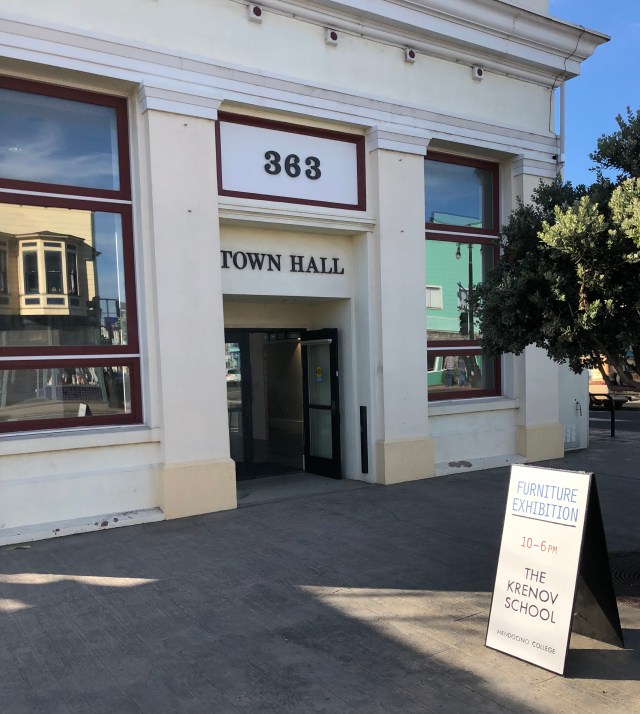
A few weekends ago, I traveled up the Mendocino Coast in Northern California to see The Krenov School’s midwinter show in Fort Bragg, Calif. I suppose I’ve been vocal enough about my status as an alumnus of the school (when it was the College of the Redwoods), so I’ll just say that I like to get back when I can, visit the wonderful people of the area and check out the work in the show. The midwinter show, not the year-end show, has become the alumni event that brings dozens and dozens of us alumni back to the school.
One person I look forward to seeing when I visit is David Welter. David retired in 2016 from his long-time role as shop steward and jack of all trades at the school. David worked alongside James Krenov for 20 years, and he stayed on another decade and a half past the old master’s retirement from the school. David has shepherded and photographed every student piece that’s passed through the school, and he is a font of knowledge on the craft and community.
When Krenov retired from woodworking and his shop in April of 2009, he called David over to clean the place out. By this time, “Old Jim” (as he took to signing in his later years) had almost completely lost his eyesight and had retired from cabinetmaking to make his signature handplanes (which was as much a way to keep busy in the shop as it was a business venture, it seems). When David cleaned out the shop, he brought home a few of Krenov’s machines, hand tools and his workbench.
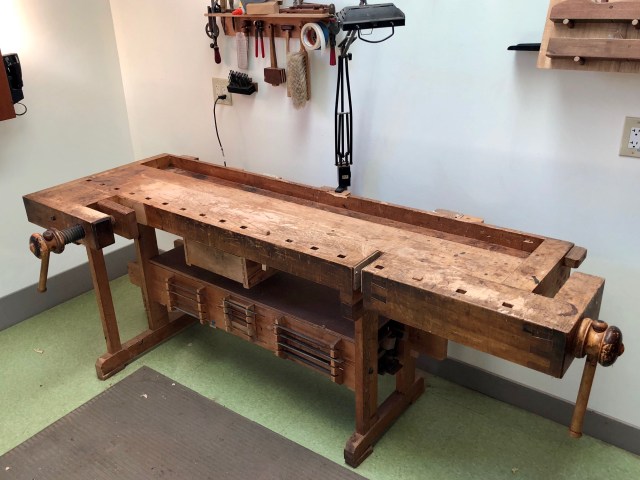
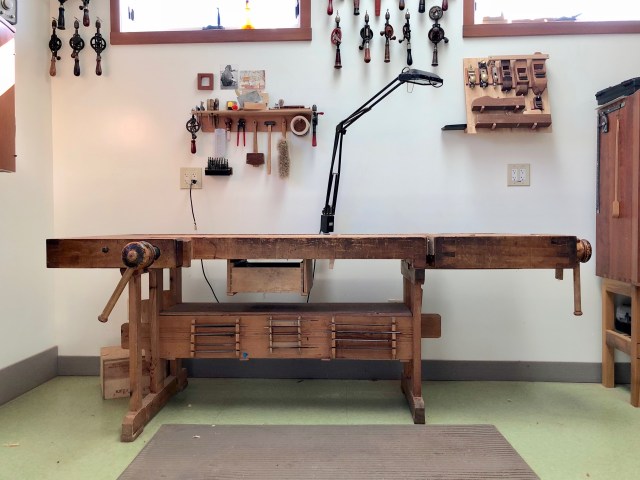
David just finished building his own small workshop this past year behind his house, a beautiful small shop split into a machine and bench room, with a small guest apartment. The machine room has all of the features of a good Krenovian shop – a nice band saw or two, a boring machine and stacks of wood too good to pass by. But in the relatively spare bench room, only two features catch the eye. One, David’s collection of egg-beater drills hangs above eye-level and is a joy to behold. The other, resting comfortably below eye-level on the same wall, is “Old Jim’s” bench, now fittingly David’s – and it is a joy to peer over, under and around.

The bench itself was built in the 1950s by Målilla Hyvelbänkar, a small family-run company that still makes traditional Swedish workbenches in Målilla, Sweden (a a town roughly halfway between Stockholm and Mälmo). Three brothers (pictured above) started the factory, and it was Yngve Karlsson who built Krenov’s bench just after the World War II.
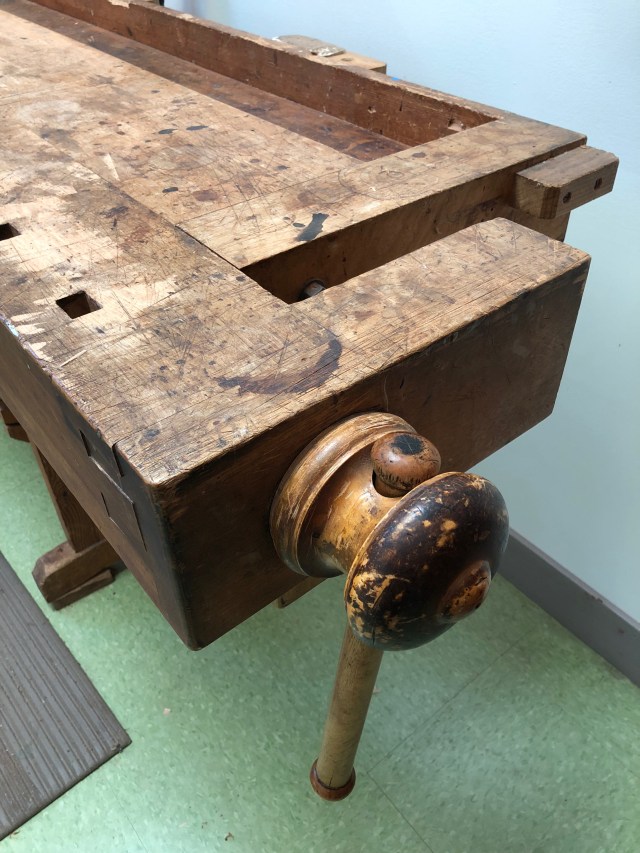
The bench will be familiar to those who have seen other Scandinavian benches from the 20th century – a large wooden tail vise and accompanying square dog holes, a shoulder vise and a shallow tool tray, with a beech benchtop. This style of bench has a particularly novel stance, with a much wider set of trestles on the shoulder vise end, to accommodate the vise’s protrusion. The tail vise is a classic construction, with the large wooden thread tucked into the dovetailed end cap, plus a guide rail that keeps the vise from sagging and racking.
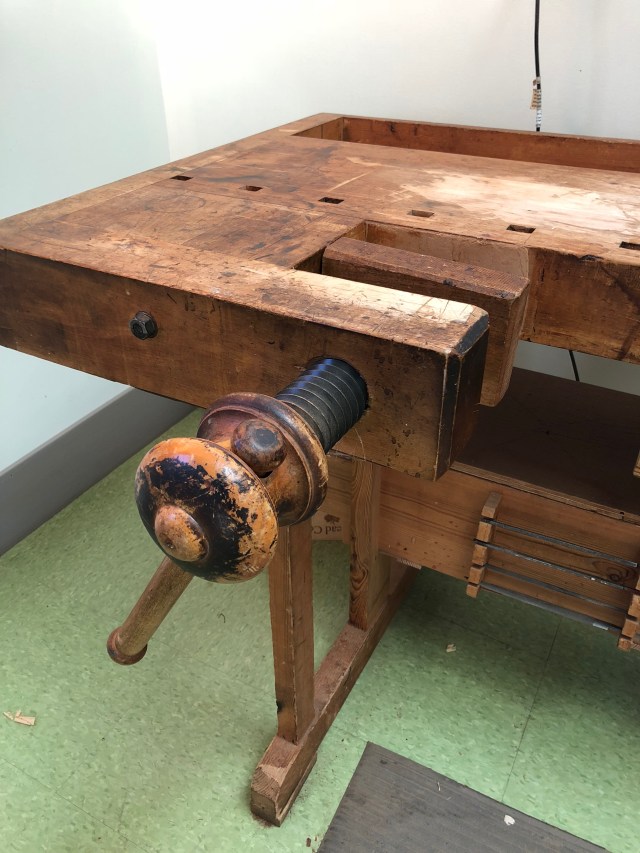
The shoulder vise, however, is a bit peculiar. The sliding chop, which runs in an odd channel, has been beaten up significantly. Krenov preferred this style of vise for its capacity – without a thread in the middle of the vise’s depth, it could hold much larger parts (all the way down to the floor), such as full carcases or long drawers. Ejler Hjorth-Westh owns a much later bench from the same company, made by Leif. On his, there’s a more standard vise, ordered in a batch of benches by another CR alumnus, Link Van Cleave, who encouraged the maker to pursue a more standard vise layout to sell more benches in the States.
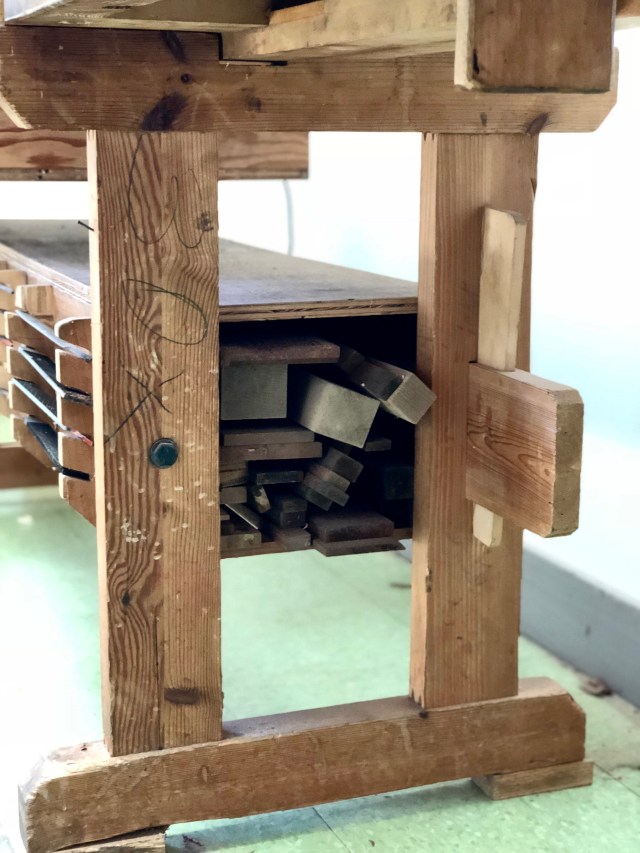
Krenov made a number of simple modifications to the bench (and made them when it was relatively new, judging by the cover shot from the 1986 Prentice Hall edition of “The Impractical Cabinetmaker” which shows the bench back in Sweden with all of the modifications). He added two plywood shelves above and below the bench’s rails, inside of which he stored small pieces of lumber. He also added a simple rasp and file rack to the front of the rail.
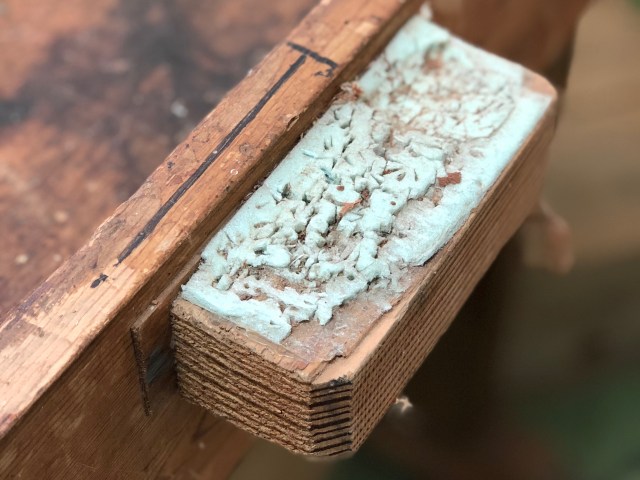
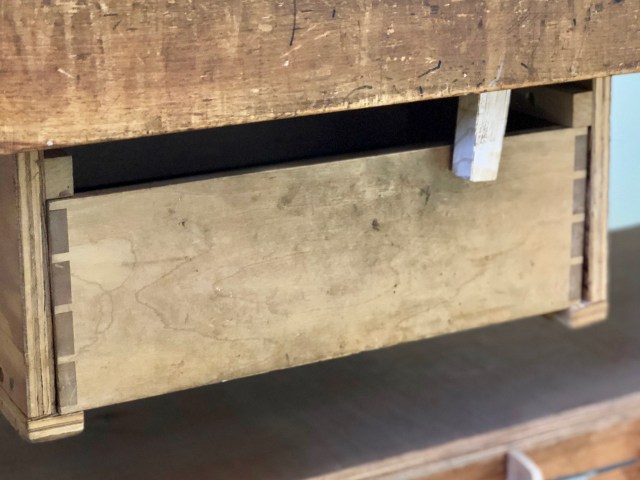 On the back of the benchtop, he attached a number of blocks for holding his work light and several small foam knife blocks, into which he often stuck his carving knives. Under the bench is another simple modification – a side-hung drawer. The drawer is tucked under the top a bit, making it hard to reach – but this positioning keeps it away from the bench dogs, which might otherwise be difficult to pop up into service.
On the back of the benchtop, he attached a number of blocks for holding his work light and several small foam knife blocks, into which he often stuck his carving knives. Under the bench is another simple modification – a side-hung drawer. The drawer is tucked under the top a bit, making it hard to reach – but this positioning keeps it away from the bench dogs, which might otherwise be difficult to pop up into service.
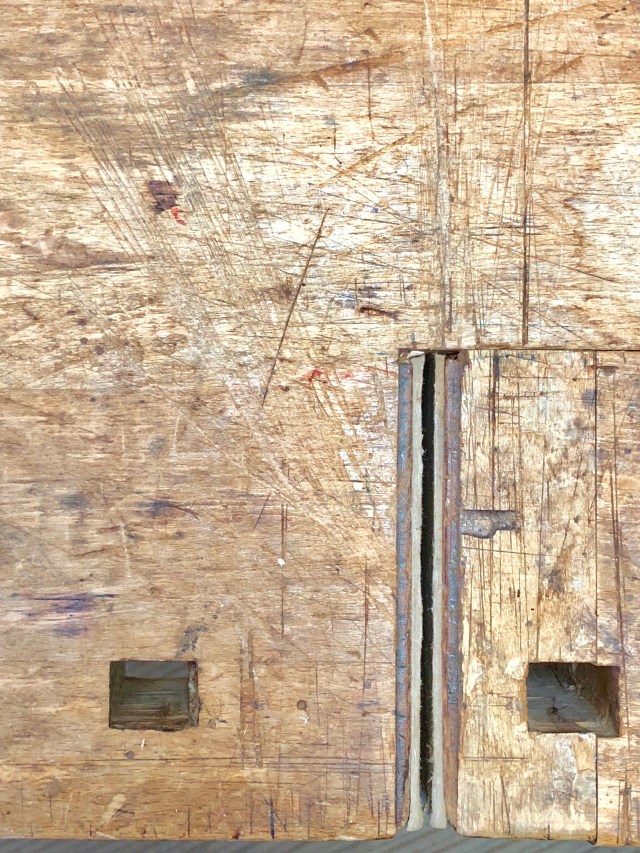
The bench is laden with marks from more than a half-century. At the tail vise, a particular angle was sawn so often (roughly 22º) that its kerfs are deeply marked into the top. The small knife blocks bear hundreds of small knife points, which show the variety and small size of the knives Krenov made and used (no slöjd knives here, despite his long residence in Sweden).
Krenov worked for several decades with this bench in his home in Bromma (a suburb of Stockholm), Sweden, and when he moved west to establish the school in Fort Bragg in 1981, he brought it with him. It lived in his corner of the bench room at the school for another two decades, eventually moving to the back room where he escaped from students. Finally, when he left the school in 2002, it followed him home to the shop where David picked it up in 2009.
Visiting this bench, the school and visiting with David and the rest of the teachers always brings about a particular flavor of nostalgia – it isn’t just a yearning for the old, but rather, a desire to get back to work having remembered the monastic time I spent at the school and the philosophy of its founding teacher. There is a quiet energy, not an excitement or enthusiasm, that always comes to me after a visit to Fort Bragg. Maybe, more than anything, it’s just a desire to be at the bench, working with a slow inertia toward fine work.
— Brendan Gaffney